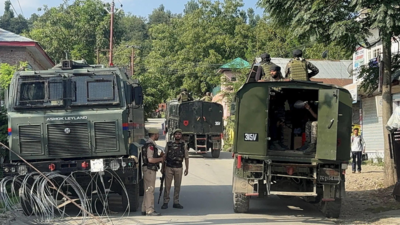India bleeds Pakistan dry: Water at ‘dead’ levels in Pakistan’s dams; bigger Indus river plans in the works – top points to know

Pakistan is finding it difficult to get through its kharif season with consistently lower levels of water in dams – a situation brought about by India’s suspension of the Indus Waters treaty. And, it’s going to get progressively worse in the coming years as India executes several projects on the Indus river system.India is implementing a comprehensive plan to optimise the usage of the Indus river system through inter-basin water transfers. The strategy includes constructing a 113-km canal to redirect excess water from Jammu & Kashmir towards Punjab, Haryana, and Rajasthan. These initiatives are planned alongside current short-term activities involving flushing and desilting of reservoirs at two run-of-the-river hydroelectric facilities – Baglihar and Salal – on the Chenab river. The immediate actions aim to store and regulate maximum water flow following the suspension of the 1960 Indus Waters Treaty by the Modi government after the Pahalgam terrorist attack in April.Additional medium and long-term strategies include accelerating ongoing hydroelectric developments such as Pakal Dul (1,000 MW), Ratle (850 MW), Kiru (624 MW) and Kwar (540 MW) to utilize water from the Indus river system.
India’s Big plans for Indus Waters
Looking past short-term measures, India is now working on a bigger plan to effectively utilise the Indus river system to its benefit. According to a TOI report, India is looking at a comprehensive plan for inter-basin water transfers, beginning with a feasibility assessment for a 113 km canal to redirect excess water from Jammu & Kashmir to Punjab, Haryana and Rajasthan.

India taps into Chenab
- The proposed canal will connect Chenab with Ravi-Beas-Sutlej, ensuring optimal utilisation of eastern rivers (Ravi, Beas and Sutlej) whilst enabling India to fully utilise its allocated share of western rivers (Indus, Jhelum and Chenab) under the Indus Waters Treaty, thereby preventing excess water flow to Pakistan.
- Sources told TOI that the Chenab-Ravi-Beas-Sutlej connection is designed to integrate with existing canal infrastructure at 13 points across Jammu, Punjab, Haryana and Rajasthan, ultimately linking to the Indira Gandhi canal (Sutlej-Beas).
- Home Minister Amit Shah recently announced that Indus waters would reach Sri Ganganagar in Rajasthan via canals “within three years”, benefiting vast agricultural regions whilst potentially limiting Pakistan’s water access.
- Diverting excess water flows from J&K towards Punjab, Haryana and Rajasthan could assist in achieving a more balanced regional water distribution.
- Uttam Sinha, senior fellow at the Manohar Parrikar Institute for Defence Studies and Analyses (IDSA) is of the view that the plan would strengthen India’s water security in the face of climate uncertainties.
- The connectivity between new and existing canal infrastructure can be established via multiple tunnels at various points in J&K and Punjab. Officials have indicated that the 113-km-long canal project for redirecting surplus water from J&K to Punjab, Haryana and Rajasthan would be implemented in segments, with 13 priority locations identified for connecting with existing canals.
“There is also a proposal to double the length of the existing Ranbir canal, drawing water from the Chenab, from 60 km to 120 km. Efforts will also be made based on the feasibility report to use Pratap canal to its full capacity,” said an official.Also Read | Bigger Indus plan: 113km canal to take surplus to Punjab, Haryana and RajasthanAdditionally, the government plans to restart the long-delayed Ujh multipurpose project in Kathua, J&K, which will serve hydropower, irrigation and drinking purposes.The Ravi-Beas connection beneath Ujh, previously designed to capture surplus water flowing to Pakistan via Ravi through a barrage construction, will now be integrated into the broader inter-basin water transfer initiative. This will enable water diversion through a tunnel to the Beas basin, ensuring India utilises its complete allocation of eastern rivers. River Ujh serves as a primary tributary of Ravi.
Pakistan faces ‘dead’ water levels
Meanwhile, water in rivers flowing to Pakistan has reached ‘dead’ levels. The western rivers – Indus, Jhelum and Chenab – flowing from India are seeing a continuous reduction in volume, forcing Pakistan to release more water than it receives to meet its drinking and irrigation requirements. Although this is typical during pre-monsoon periods, the situation could worsen as India conducts regular desilting and flushing of dams in Jammu & Kashmir to enhance storage capacity, which will further reduce water flow downstream.Also Read | In kharif season, water levels at 2 key Pakistan dams near ‘dead levels’Pakistan’s Punjab province, where kharif cultivation has started, is receiving a lower amount of water compared to the same time last year.Pakistan’s monsoon rains are expected to begin in about a month, yet water levels in its crucial dams – Mangla on river Jhelum and Tarbela on Indus – have already declined to near their respective ‘dead levels’ (the point below which gravity cannot drain water from the reservoirs).This means further decrease in water flow from the Indian side may leave Pakistan with few options to facilitate farming operations before the arrival of the monsoon.Although conditions should improve when the monsoon arrives in Pakistan early next month, managing regular water discharge will be challenging for authorities without water flow data from India, following the Indus Waters Treaty’s suspension.Given India’s decision to suspend the 1960 treaty after the Pahalgam terror attack in April, they are not required to share this data with Pakistan under current circumstances.





